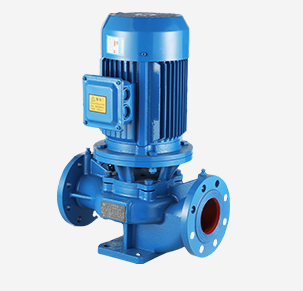TEL:
+86 13120555503
Icelandic
- Afrikaans
- Albanian
- Amharic
- Arabic
- Armenian
- Azerbaijani
- Basque
- Belarusian
- Bengali
- Bosnian
- Bulgarian
- Catalan
- Cebuano
- Corsican
- Croatian
- Czech
- Danish
- Dutch
- English
- Esperanto
- Estonian
- Finnish
- French
- Frisian
- Galician
- Georgian
- German
- Greek
- Gujarati
- Haitian Creole
- hausa
- hawaiian
- Hebrew
- Hindi
- Miao
- Hungarian
- Icelandic
- igbo
- Indonesian
- irish
- Italian
- Japanese
- Javanese
- Kannada
- kazakh
- Khmer
- Rwandese
- Korean
- Kurdish
- Kyrgyz
- Lao
- Latin
- Latvian
- Lithuanian
- Luxembourgish
- Macedonian
- Malgashi
- Malay
- Malayalam
- Maltese
- Maori
- Marathi
- Mongolian
- Myanmar
- Nepali
- Norwegian
- Norwegian
- Occitan
- Pashto
- Persian
- Polish
- Portuguese
- Punjabi
- Romanian
- Russian
- Samoan
- Scottish Gaelic
- Serbian
- Sesotho
- Shona
- Sindhi
- Sinhala
- Slovak
- Slovenian
- Somali
- Spanish
- Sundanese
- Swahili
- Swedish
- Tagalog
- Tajik
- Tamil
- Tatar
- Telugu
- Thai
- Turkish
- Turkmen
- Ukrainian
- Urdu
- Uighur
- Uzbek
- Vietnamese
- Welsh
- Bantu
- Yiddish
- Yoruba
- Zulu
Telephone: +86 13120555503
Email: frank@cypump.com
feb . 14, 2025 17:04 Back to list
pipeline pump
Understanding the differences and applications of effluent pumps and sump pumps is crucial for homeowners, contractors, and facility managers. While they might seem similar, their functions, contexts of use, and technical specifications significantly differ. Proper knowledge in this area ensures optimal performance and longevity of your property's drainage equipment.
On the other hand, homeowners in flood-prone areas or those with basements below the water table may find sump pumps indispensable. The value they offer in protecting property and assets from water damage is immense. Advances in technology have also led to the development of battery backup systems, ensuring continuous operation during power outages—a common occurrence during severe weather conditions. Reliability is the cornerstone of both pump types. In the case of effluent pumps, this equates to consistent efficiency in handling semi-solid waste without clogging or failures. Meanwhile, sump pumps must be on standby, ready to activate when water levels rise unexpectedly. Routine inspections and timely replacement of worn-out parts are essential practices for both systems, underpinning their longevity and operational success. When considering either pump, attention to manufacturer reputation and warranty terms is advised. A respected brand offering comprehensive customer support and a robust warranty indicates confidence in their product. Users are encouraged to consult professionals for installation and maintenance to ensure compliance with local regulations and optimal performance. In conclusion, while both effluent pumps and sump pumps serve critical roles in waste and water management, their distinct functions mean that one cannot substitute for the other. Knowing what each pump type offers and under which circumstances they excel allows property owners to make informed decisions that safeguard their homes and environmental health. Investing in high-quality, reputable pumps, coupled with regular maintenance, provides peace of mind and reliable protection against water damage and waste mishandling.


On the other hand, homeowners in flood-prone areas or those with basements below the water table may find sump pumps indispensable. The value they offer in protecting property and assets from water damage is immense. Advances in technology have also led to the development of battery backup systems, ensuring continuous operation during power outages—a common occurrence during severe weather conditions. Reliability is the cornerstone of both pump types. In the case of effluent pumps, this equates to consistent efficiency in handling semi-solid waste without clogging or failures. Meanwhile, sump pumps must be on standby, ready to activate when water levels rise unexpectedly. Routine inspections and timely replacement of worn-out parts are essential practices for both systems, underpinning their longevity and operational success. When considering either pump, attention to manufacturer reputation and warranty terms is advised. A respected brand offering comprehensive customer support and a robust warranty indicates confidence in their product. Users are encouraged to consult professionals for installation and maintenance to ensure compliance with local regulations and optimal performance. In conclusion, while both effluent pumps and sump pumps serve critical roles in waste and water management, their distinct functions mean that one cannot substitute for the other. Knowing what each pump type offers and under which circumstances they excel allows property owners to make informed decisions that safeguard their homes and environmental health. Investing in high-quality, reputable pumps, coupled with regular maintenance, provides peace of mind and reliable protection against water damage and waste mishandling.
Share
Latest news
-
Heavy-Duty Mining Sludge Pumps - Wear-Resistant Slurry Handling
NewsAug.02,2025
-
Horizontal Split Case Pump with GPT-4 Turbo | High Efficiency
NewsAug.01,2025
-
ISG Series Pipeline Pump - Chi Yuan Pumps | High Efficiency, Durable Design
NewsAug.01,2025
-
Advanced Flue Gas Desulfurization Pump with GPT-4 Turbo | Durable & Efficient
NewsJul.31,2025
-
ISG Series Vertical Pipeline Pump - Chi Yuan Pumps | Advanced Hydraulic Design&Durable Construction
NewsJul.31,2025
-
ISG Series Vertical Pipeline Pump - Chi Yuan Pumps | Energy Efficient & Low Noise
NewsJul.31,2025










